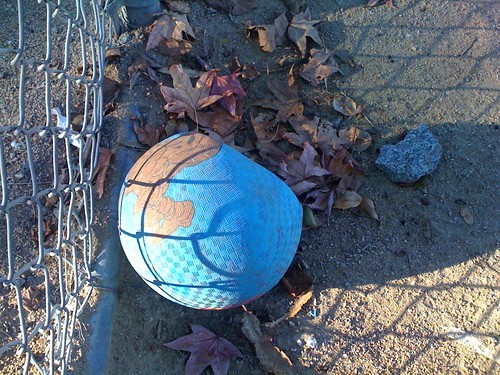
The last few days before break, Peter* – the tenth grade English teacher & senior Homeroom teacher in our SLC – spent time after school engaged in leading dance lessons. His vision: have all of the seniors of the School of Communication and Global Awareness waltz at their prom in five months’ time.
Starting small, a handful of students stayed after school days before their holiday break. Some happened to be engaged in board games, unknowingly witnessing the transformation of the classroom into a workable dance studio; the tables were folded away and the game players ushered to the walls, creating a sizable space for movement.
A half dozen of us then began the lessons of waltzing. Armed with only a single piano track and Elliott Smith’s “Waltz #2,” we patiently learned the give and take of the ¾ routine. There’s still plenty of work to be done.
What intrigued me most were the conversations that sprang forth – explanation of the typical male and female/lead and follow roles in dance lead to discussions of feminism that had already been well underway from reading The Awakening in my class throughout December. Likewise, the waltz lead to a lengthy exchange of cultural dances and a rushing forth to YouTube for songs students connected with, wanted to share, and felt worth explicating the importance of. I followed suit and shared my fascination with (and utter clumsiness at pulling off) Crip Walking. This too lead to discussions of power and representation and ownership of dances and culture.
Occasionally, students would walk past the door and peer in: Elliott Smith crooning through one set of speakers, a pair of students teaching left-footed teachers to salsa, and Elton John’s “Crocodile Rock” blaring distortedly through laptop speakers. It was the kind of organized chaos that only comes from multilateral engagement.
And what if such practices became the centerpiece not simply in elective courses but in the core – standardized tested – classes? If the history and power dynamics of dance became the center of social studies? If we read the language and analyze the suggestions of performance and aesthetic? And what about Sousaphones? Once we’d gotten past the awkwardness of uninhibited movement, we were all engaged in understanding and in learning; in the three post-finals days at Manual Arts – a time that finds teachers finalizing grades and generally showing films and letting students hang out – this was the most engaged I’d seen students.
*As with many of the friends I work with regularly, I’ve mentioned Peter several times on this blog. His comment to this prior post is especially worth a look.






